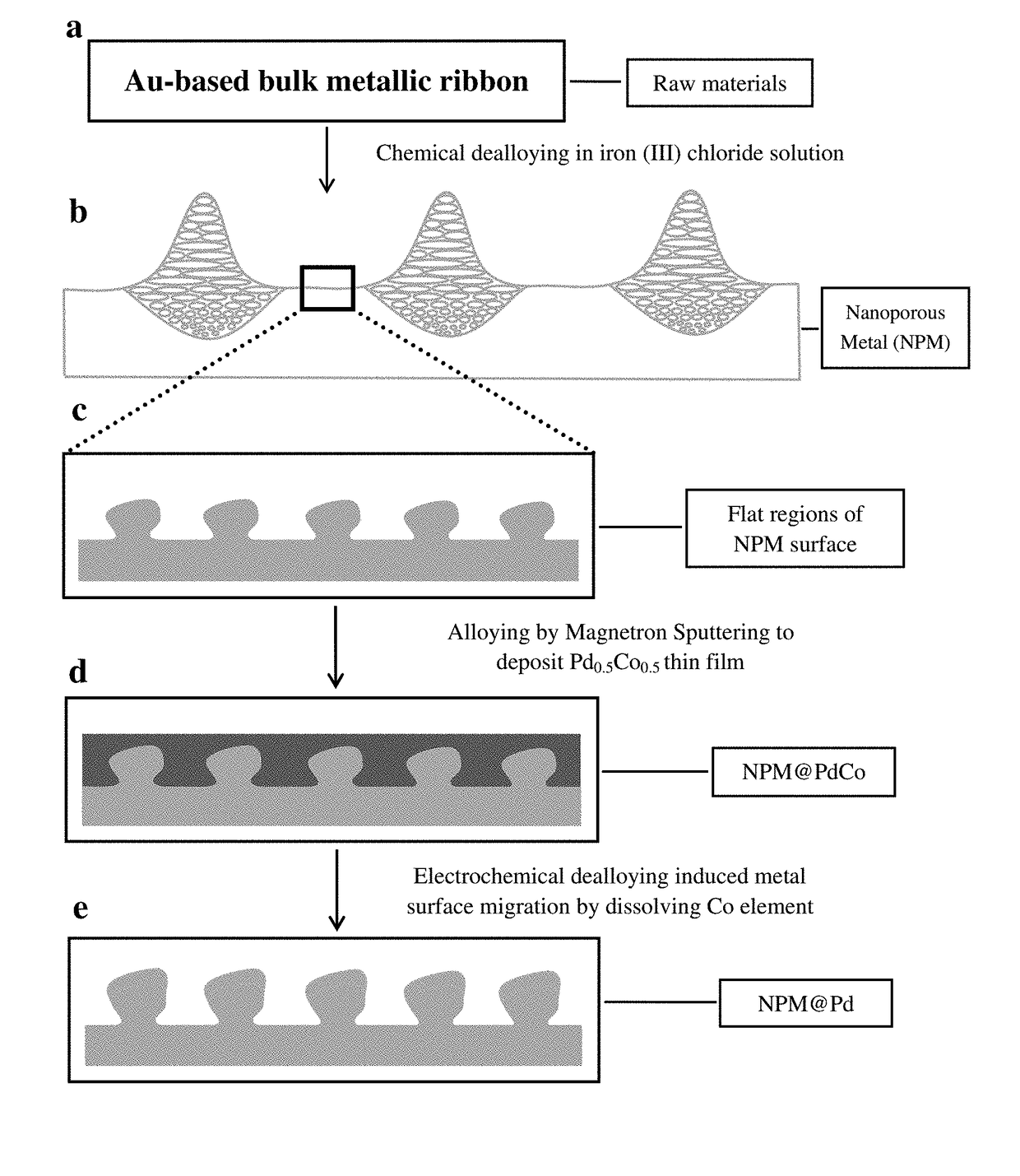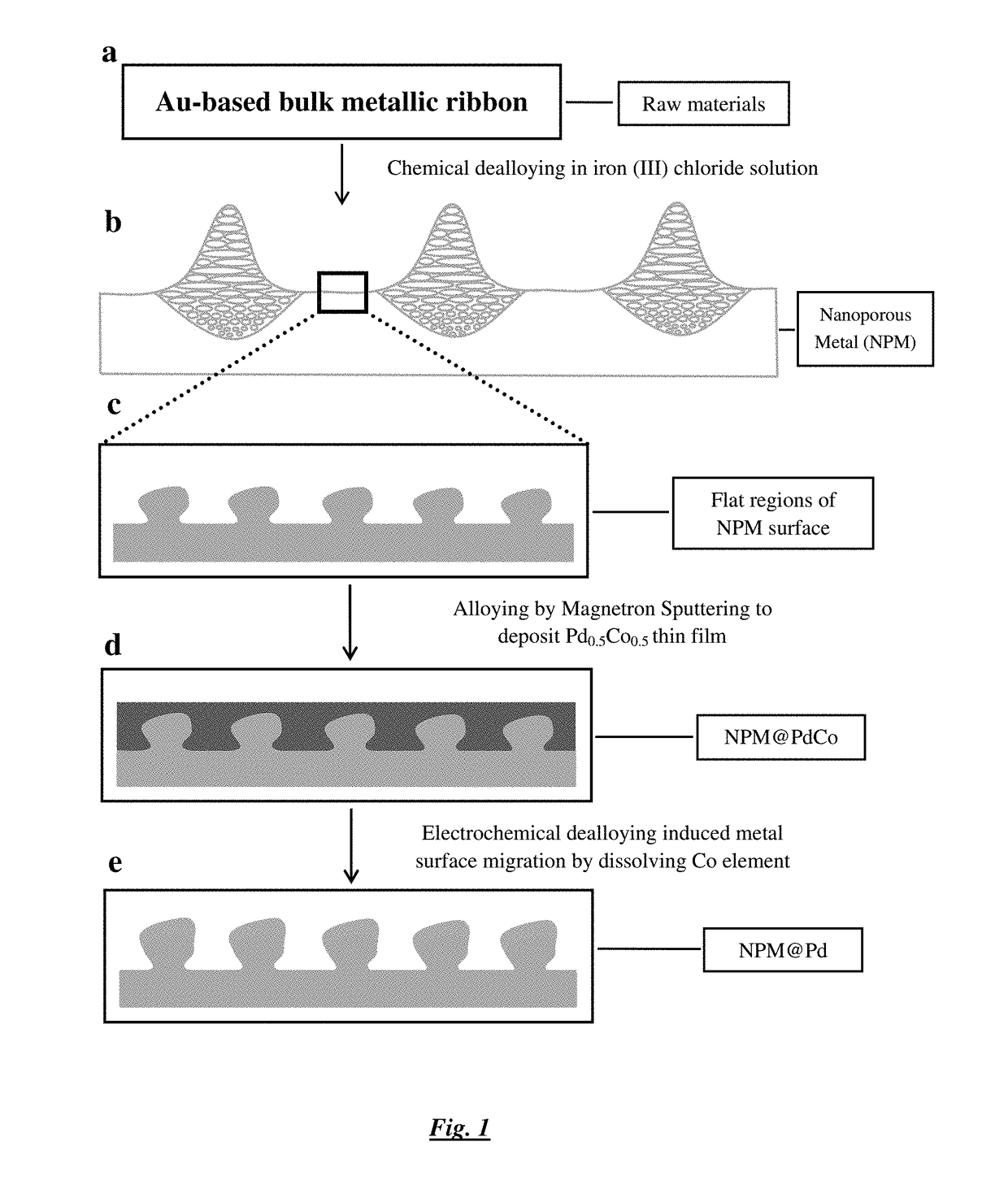Method of fabricating nanoporous metal structure
a nanoporous metal and metal structure technology, applied in the direction of cell components, vacuum evaporation coatings, coatings, etc., can solve the problems of low efficiency, poor stability of the catalyst, and commercialization of dm
- Summary
- Abstract
- Description
- Claims
- Application Information
AI Technical Summary
Benefits of technology
Problems solved by technology
Method used
Image
Examples
Embodiment Construction
[0062]Nanoporous metals, such as gold (Au), palladium (Pd) and platinum (Pt), have been attracting increasing attention for their wide variety of applications in functional areas. Porous structure is especially ideal for catalytic applications because of the large surface-to-volume ratio as well as the interconnected channels and metal ligaments, which accelerate the transportation of electrons and molecules, thus providing excellent electrical conductivity. For this reason, several approaches have been developed to fabricate nanoporous metals. Chemical dealloying and electrochemical dealloying are both regarded as being effective approaches through which the more electrochemically active metal is dissolved and the more noble metal remains.
[0063]There are two key principles relating to dealloying processes, namely the limiting principle and the critical potential for electrochemical dealloying. The limiting principle states that the atomic fraction of the less noble metal must be mo...
PUM
| Property | Measurement | Unit |
|---|---|---|
| thickness | aaaaa | aaaaa |
| thickness | aaaaa | aaaaa |
| distance | aaaaa | aaaaa |
Abstract
Description
Claims
Application Information
 Login to View More
Login to View More - R&D
- Intellectual Property
- Life Sciences
- Materials
- Tech Scout
- Unparalleled Data Quality
- Higher Quality Content
- 60% Fewer Hallucinations
Browse by: Latest US Patents, China's latest patents, Technical Efficacy Thesaurus, Application Domain, Technology Topic, Popular Technical Reports.
© 2025 PatSnap. All rights reserved.Legal|Privacy policy|Modern Slavery Act Transparency Statement|Sitemap|About US| Contact US: help@patsnap.com



